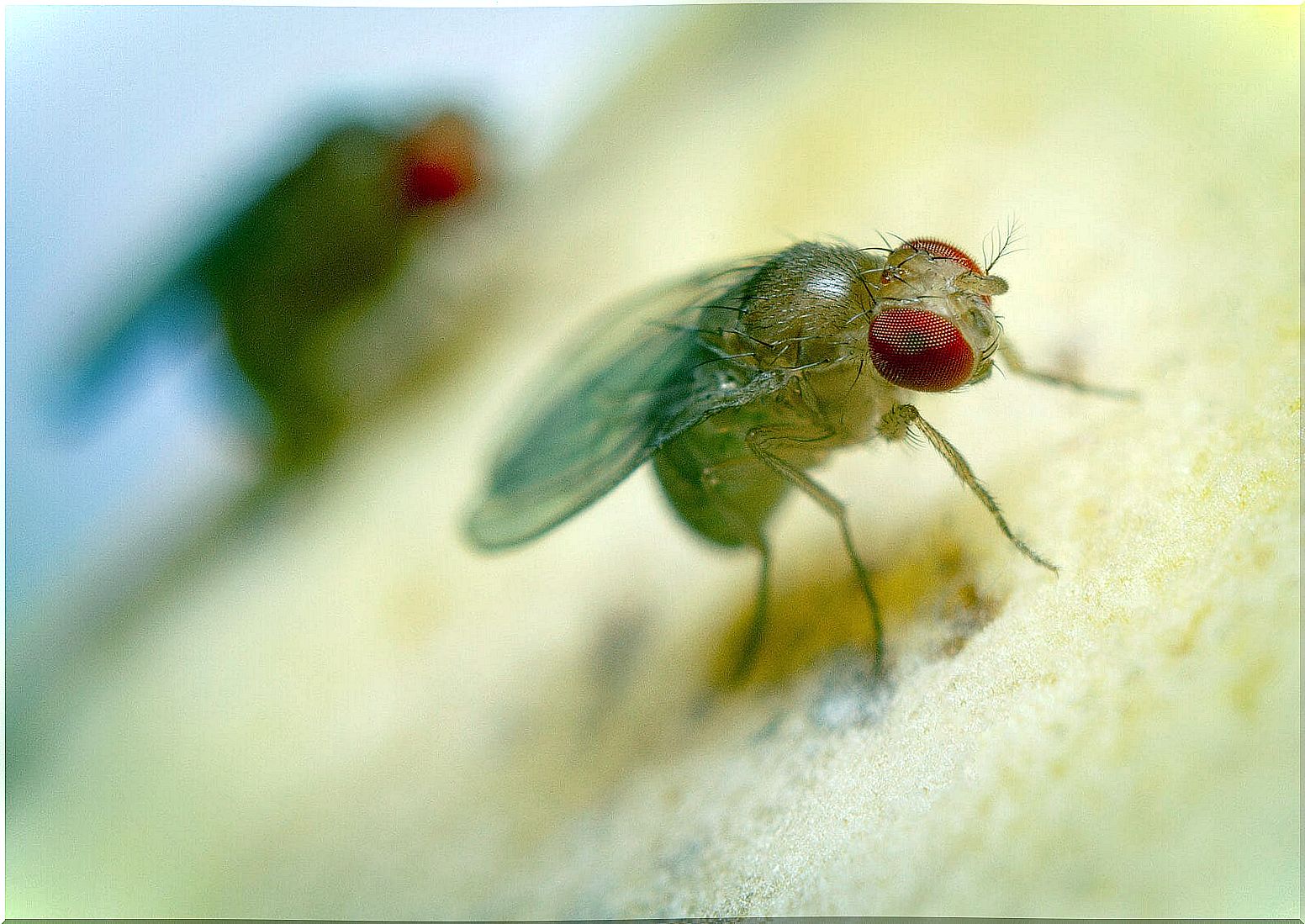Myiasis: Causes And Types
Cutaneous myiasis is an infestation of the skin caused by larvae of certain species of flies such as Dermatobia hominis and those of the Calliphoridae or Oestridae family. The habitat of these species are humans or animals that have low defenses.
The larvae, which are the juvenile stages and have different anatomy, physiology and ecology from the adult, feed on living or dead tissue. In this way, they carry out tissue destruction by invading large amounts of skin.
Signs and symptoms vary depending on the species of fly causing it. These infestations generally occur in tropical countries. People who have myiasis in other countries have often recently visited a tropical country.
Symptoms of myiasis

The most common symptoms that can be experienced are the following:
- Skin itching
- Intense itching
- Sensation of movement in the area.
- Sharp and stabbing local pain.
Initially, a small red bump appears that can be mistaken for a common insect bite or an incipient boil. Then it evolves into a larger lump with an opening in the center.
Unlike the larvae of common house flies, most larvae that cause myiasis invade both healthy tissue and dead tissue.
Clinical forms

1. Furunculoid myiasis
Many of the flies that cause furuncular myiasis are known as blowflies. The best known species that cause this disease come from South and Central America and from sub-Saharan and tropical Africa.
Flies sometimes lay their eggs on other insects such as mosquitoes or on objects such as hanging clothes and thus can come into contact with human skin.
The eggs hatch into larvae and they penetrate the skin and develop into mature larvae. Without treatment, the larvae eventually emerge from the skin and fall to the ground to continue their life cycle.
Sometimes a small part of the end of the larva can be seen. The larvae need oxygen, so if the skin opening is blocked, they can come out or at least get closer to the surface.
2. Rampant linear myiasis
In this case, by migrating under the skin, the larva creates dermographism.
3. Subcutaneous myiasis
Deep and painful lumps appear that disappear after a few days. However, after a short distance, they reappear until the last tumor ulcerates, releasing the larvae.
4. Cavitary myiasis
Cavitary myiasis is the most destructive form of myiasis. This is because it attacks the entire head, especially the paranasal sinuses and the external auditory canal.
It is called cavitary because it forms large deposits destroying tissue, cartilage and bones. It can even cause the death of the patient. Once it has passed through the cranial bones, it can reach the brain, causing inflammation and even bleeding and bleeding.
Treatment, diagnosis and prevention
The diagnosis of myiasis is made by the clinical picture. Sometimes an ultrasound is recommended to facilitate diagnosis and treatment.
For ulcers, treatment is with soap and water, topical antiseptics, and oral antibiotics. In the case of furunucular myiasis, to block the opening of the skin, petroleum jelly or nail polish is applied. Larvae generally emerge spontaneously within 24 hours.

If the larvae die before being removed, they are more difficult to remove and often cause an intense inflammatory reaction. It is necessary to try to extract the complete larva.
On the other hand, the drug ivermectin, administered orally or topically, can kill the larva or cause it to hatch. In addition, the use of repellants is useful to prevent the mosquitoes carrying larvae of the flies from depositing them.
Finally, these are a series of measures to avoid infection by fly larvae:
- Close windows and doors after dark.
- Put nets or meshes on the windows.
- Avoid having food, garbage or accumulated liquids inside the house.
- Use mosquito repellent, especially in the areas most affected by this type of disease.
In addition to this, in tropical regions it is recommended to iron all clothing before use, especially if it has been dried outside the house, since fly eggs can adhere to the fabric.








